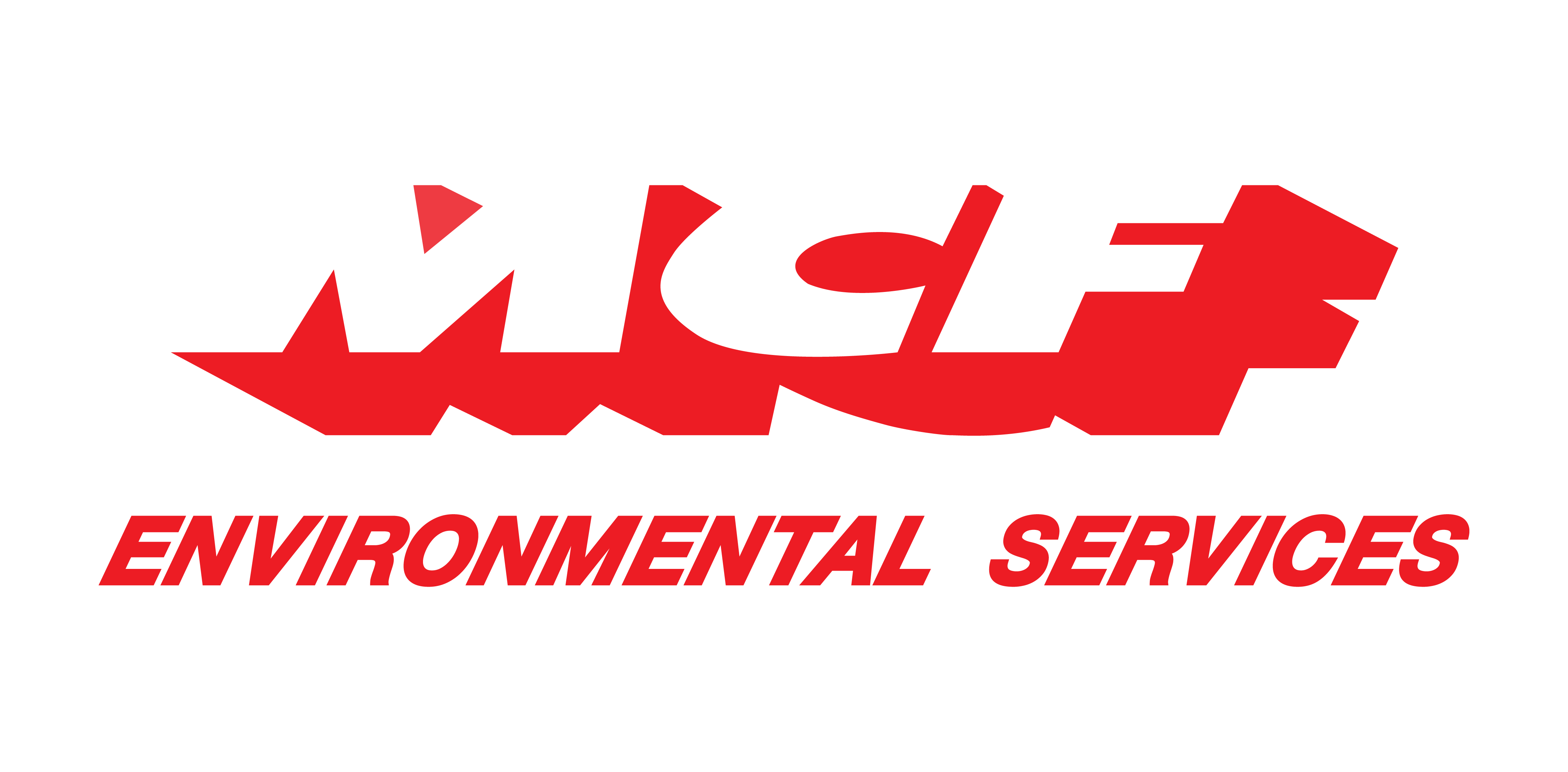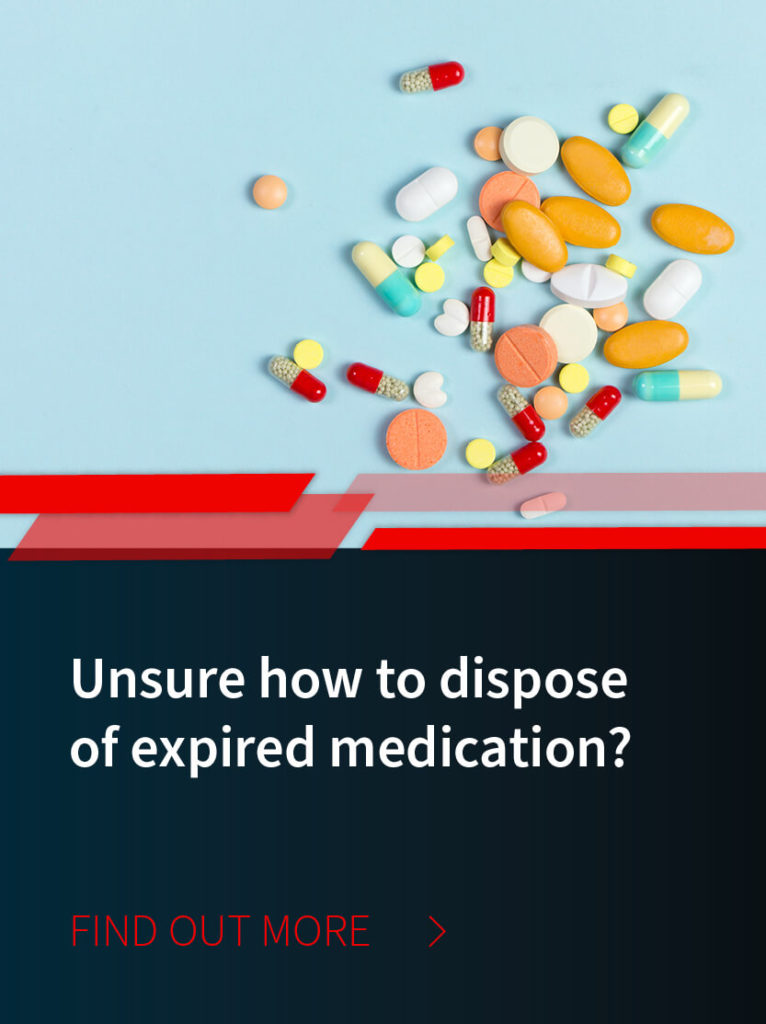
/ IN THIS BLOG
01 / Identifying Pharmaceutical Waste
What exactly is pharmaceutical waste? This waste stream can include but is not limited to any expired or unused medication that is either no longer needed or cannot be used. The Environmental Protection Agency (EPA) defines a potentially hazardous pharmaceutical waste as one that is still in its original manufacturer’s package and/or one that is less than one year past its expiration date.
Know the difference between potentially hazardous pharmaceutical waste and non-prescription pharmaceuticals that can include but are not limited to dietary supplements, over-the-counter medications, and homeopathic drugs. See the Code of Federal Regulations (CFR 40 Part 266.500) for further details.
Some pharmaceutical waste may also contaminate personal protective equipment in some care scenarios (CFR 40 Part 266, Subpart P), such as an accidental spill and would then be disposed of in a hazardous waste container or bin. The devil is in the details, as the saying goes, as the rules for applicability are often confusing. On the other hand, for example, handling a warfarin tablet with gloves doesn’t make the gloves a hazardous pharmaceutical waste, even though warfarin is considered a hazardous pharmaceutical.
If you are not sure, err on the side of caution. Any waste containing medicinal drugs, including expired prescriptions and contaminated paraphernalia such as vials, syringes, and intravenous equipment, must be disposed of using the rules and protocols established for the management of pharmaceutical waste.
02 / Pharmaceutical Disposal and the Environment
Improper storage and disposal of pharmaceutical waste can result in the same adverse occurrences associated with hazardous waste: environmental pollution and danger to human health. As a result, a legal duty of care exists for any organization that produces, manages, stores or disposes of pharmaceutical waste.
In some cases, highly toxic pharmaceuticals, like those identified by National Institute of Occupational Safety and Health as hazardous, along with chemotherapy agents, bulk powders, and some vitamin or mineral preparations. In addition, "biohazardous (infectious)" materials, such as vaccines and blood products, require specific infectious disposal protocols.
In 2019, the Resource Conservation and Recovery Act passed the Hazardous Waste Pharmaceutical Final Rule. All states are required to adopt this rule by July 1, 2022. In a nutshell, this rule prohibits disposal of any hazardous waste pharmaceutical into sinks, toilets, or sewer lines, with very limited exceptions. Details regarding the rule can be found in the U.S. Code of Federal Regulations (CFR) Title 40, Parts 260-265 and within the Federal Register (84 FR 5816).
The goal of the ruling was (and is) to ensure the protection of the environment and human health, reducing up to 2,300 tons of hazardous waste pharmaceuticals dumped into sewers that previously ended up in our waterways.
This rule also stipulates (and reaffirms) the EPA’s policy that even non-prescription pharmaceuticals that have the potential to be reused or reclaimed are not to be defined as solid waste.
The EPA requires facilities and businesses that generate pharmaceutical waste to operate in accordance with hazardous waste requirements. Some of the most common pharmaceuticals, including nicotine and chemotherapy agents, are already regulated as hazardous waste under the Resource Conservation and Recovery Act (RCRA).
Refer to the EPA for listings of P-listed and U-listed pharmaceutical wastes, which are acutely hazardous and include but is not limited to nicotine and warfarin. You can also find the P and U listings under 40 CFR Part 261.33.
In addition, be aware that some hazardous pharmaceutical wastes are also determined by their characteristics, such as toxicity or ignitability. Knowledge of characteristics is vital in proper storage, transportation, and disposal processes.
It takes time and patience to review federal and state laws regarding pharmaceutical waste, and both must be followed. You can turn to experts in the field of pharmaceutical waste management such as MCF Environmental Services to help guide your pharmaceutical waste disposal practices.
03 / Follow a Blueprint for Compliance
Following standard procedures for hazardous waste collection, treatment, and disposal provides any facility dealing with pharmaceuticals an essential foundation for pharmaceutical waste management compliance. A number of basic rules apply. For example:
For any hazardous waste unable to be treated onsite, review 40 CFR 263 (Standards Applicable to Transporters of Hazardous Waste), which governs the collection and transportation of hazardous waste to an appropriate processing and disposal facility. Keep in mind that 40 CFR Part 2 also applies (Standards Applicable to Generators of Hazardous Waste).
Part 263 of CFR Title 40 specifies that any organization or person participating in the off-site transportation of hazardous waste must comply with EPA rules, such as obtaining an EPA identification number by filling out Form 8700-12 and submitting that to the EPA or approved state governmental agency. In addition to the identification number, transport of hazardous waste requires the completion of a hazardous waste manifest. The waste manifest facilitates tracking of waste from its point of origin to its final disposal.
Transporters of hazardous waste must also comply with US DOT regulations covering the safe transport of hazardous materials on public roadways.
Compliance also relies on accurate and timely documentation, segregation, and organization of your pharmaceutical wastes. Such processes are essential in staying within guidelines of federal and state agencies in regard to waste management.
04 / About Trace and Bulk Chemotherapy Waste
No discussion regarding pharmaceutical waste disposal practices would be complete without briefly mentioning chemotherapy waste and the difference between trace and bulk chemotherapy wastes and their disposal.
Chemotherapy drugs are also known as antineoplastic or cytotoxic materials, which are deemed hazardous - due to their toxicity. While definitions of such drugs convey a slight difference in how they behave, they must be properly handled and disposed of for the safety of healthcare providers, waste transporters, and the environment.
In some cases, governmental agencies may equate cytotoxic with biohazardous, though biohazardous waste is primarily intended to define an infectious waste contaminated with possible blood-borne pathogens.
Basically, trace chemotherapy wastes are often found on the equipment used in the preparation and administration of chemotherapy drugs for treatment. A ‘bulk’ chemotherapy waste typically often implies the container or vial that contains more than 3% of its original volume. Turn to the Ten Step Blueprint of 2008 (pages 28 through 30) for additional details regarding identification and how such wastes are to be managed.
A qualified waste management provider can help you assess your risks and provide knowledgeable recommendations on how to ensure compliance. With three decades of experience in waste management and disposal, MCF Environmental provides the expertise and capabilities you need to properly handle your pharmaceutical waste. Contact us today to learn more about how MCF Environmental Services can help you navigate the complex world of pharmaceutical waste management.
Robert Losurdo
President, COO








